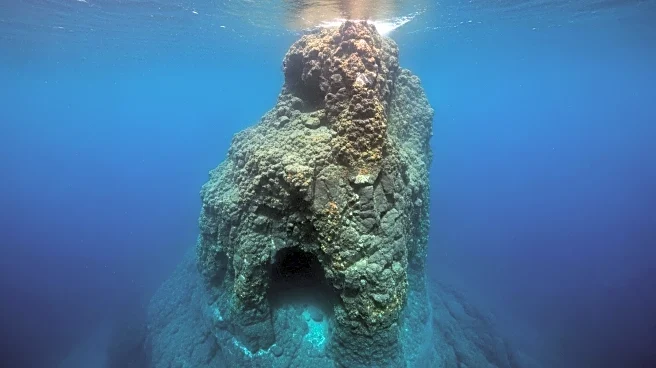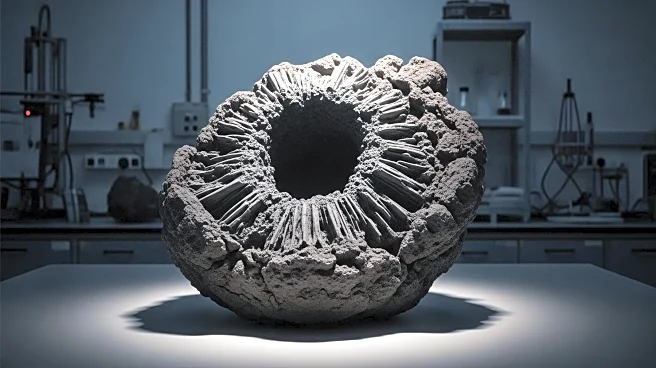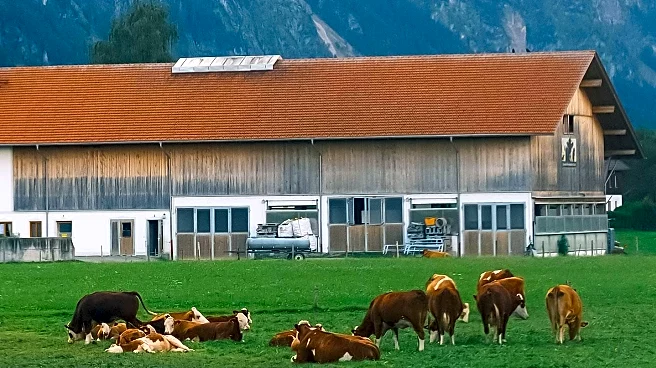What's Happening?
Researchers from the University of Cambridge have uncovered the reasons behind extensive volcanic activity in the North Atlantic region 60 million years ago. The study reveals that variations in the thickness of tectonic plates facilitated the widespread distribution of volcanic eruptions. The Icelandic mantle plume, a hot rock fountain from Earth's core, was funneled through thinner tectonic plates, leading to volcanic formations across Scotland, Ireland, and Greenland. This discovery sheds light on the historical influence of the mantle plume on the region's geology and climate.
Why It's Important?
Understanding the behavior of the Icelandic mantle plume is crucial for comprehending the geological history and current seismic activity in the North Atlantic. The findings provide insights into how mantle plumes can shape landscapes and influence ocean circulation and climate over time. This research also highlights the role of tectonic plate structures in directing volcanic activity, which can inform future studies on volcanic hazards and geothermal energy potential. The study's implications extend to improving predictions of volcanic behavior and assessing seismic risks in regions with similar geological features.
What's Next?
The research team plans to apply their seismic tomography methods to map geothermal energy resources globally. This could lead to advancements in harnessing geothermal energy, particularly in areas with thin lithosphere and high heat flow. Additionally, the study may prompt further investigations into the mantle plume's impact on oceanic and atmospheric systems, contributing to a better understanding of Earth's dynamic processes. Collaboration with international scientists could expand the application of these methods to other volcanic regions, enhancing global knowledge of mantle plume dynamics.
Beyond the Headlines
The study underscores the interconnectedness of geological processes and their long-term effects on climate and ecosystems. By revealing the historical pathways of volcanic activity, researchers can better predict future geological changes and their potential impacts on human societies. The findings also emphasize the importance of interdisciplinary approaches in geoscience, combining seismic data with geological and climate studies to build a comprehensive understanding of Earth's history.












